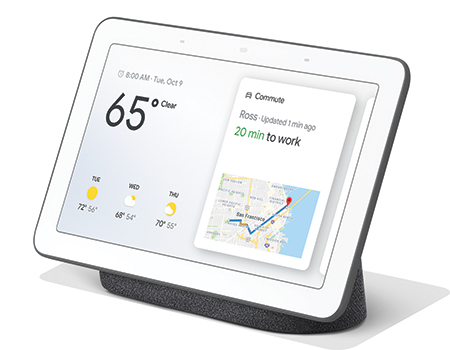Electric utilities around the U.S. and the world are in the midst of a transformation, facing new competition, higher consumer expectations, the ever-intensifying impacts of climate change and the emissions control policies being implemented to curb those impacts. These are just a few of the factors pushing utilities to change their business models, customer communication strategies and core philosophies about how to endure and thrive. Utilities at the forefront of their industry have made progress in recent years, taking bold steps toward redefining themselves to their customers as comprehensive energy services providers, instead of faceless companies that only interact with their “ratepayers” by sending them a bill each month.
To fully embrace this industry shift, technology companies and utilities alike need to ask, what will help take customer engagement to the next level? Cutting-edge smart home technology that is user-friendly and compatible with other devices will be the key to utilities reaching unprecedented levels of success in customer engagement, demand management and associated reductions in greenhouse gas emissions. Offering a central home energy platform with device control and interoperability is a good placeto start.
Joining the Energy Innovation Movement
There is a lot of innovation taking place in the world of energy, especially with wind, solar and storage technologies. These relatively new renewable resources are essential for reducing carbon emissions, yet many innovations can take a very long time to achieve results and are not currently accessible to all consumers.

One of the simplest solutions for reducing energy use and emissions is to increase utility-customer communications and understanding in order to boost voluntary conservation and efficiency measures. Utilities have many incentives to actively engage with consumers: it adds flexibility to the grid, reduces emissions and increases customer satisfaction.
This isn’t to say that it comes easy — energy use, demand response and whole-home energy management are incredibly complex undertakings for utilities to manage. They can also be difficult for customers to understand, which is a barrier to taking action to save energy in the residential sector. In reality, customers often don’t think about a utility’s offerings until their bill comes due or something goes wrong with service.
That said, there already are plenty of examples of how energy providers are using smart technology to engage with customers and form mutually beneficial relationships. Reliant/NRG and Xcel Energy, which recently distinguished itself by pledging to become a zero-carbon utility by 2050, are delivering voice activation services in Texas and Minnesota, pairing electricity plans with the latest smart technologies. Indiana Michigan Power (I&M) recently announced a partnership with Tendril and Google to provide customers access to voice-activated energy information. Alabama Power has also shared plans to build more Smart Neighborhoods — future-focused, energy-efficient communities that include homes outfitted with the latest energy-saving and smart home technologies. These partnerships connect the traditional utility business model and an existing customer base with the innovation and resources of big technology companies. Following the proven successes of these mutually-beneficial relationships and the advantages they confer to consumers, utilities around the country are again looking to smart technology to deliver the next-generation of customer engagement.
Turn Customers into Allies by Giving Them What They Want: Intuitive Devices And Convenience
So far, offering customers simple and effective technology resources has successfully increased participation in our energy systems. During the 2017 total solar eclipse, hundreds of thousands of Nest customers across the country heeded a call from Nest and its utility partners and activated their smart thermostats to counteract the loss of solar power. In recent years, online utility marketplaces have been an important tool for energy providers to improve customer acquisition and establish new revenue streams through the sale of energy-related home products like smart thermostats. Providers like Simple Energy, EFI and Enervee are making it easier than ever for utilities to launch these e-commerce platforms. Now it’s time to think about how to take this type of engagement even further, and it’s clear customers trust utility recommendations for what that looks like. A recent Smart Energy Consumer Collaborative survey found that 78 percent of consumers are more likely to participate in a program or purchase the product if their utility endorses it.
In a world packed with consumer technology, energy providers need to be conscious of consumer trends and what services and devices they are looking for. At the beginning of 2018, Bloomberg noted that consumer demand for smart thermostats will steadily increase over the next five years, so we know the devices that have already been effective aren’t going anywhere. The voice assistant industry is anticipated to generate revenues worth $7.8 billion by 2023, and according to Parks Associates, 75 percent of consumers who are planning to buy smart home devices value interoperability with other products.
These market forecasts indicate that consumers would embrace a device they can easily communicate with and that automates or controls a wide range of actions and home devices from a central point. If hundreds of household energy-saving actions can be made from a single interface, and those capabilities are distributed across thousands of homes, the benefits would be profound and lasting — compounding the positive impacts we’ve already seen with the connectivity that smart thermostats offer to utilities and customers
The Future is an Orchestra of Smart Energy Devices
So where do we go from here? In the near future, utilities will be able to provide a richer, more personalized energy management experience to consumers — from alerts about storms and outages to reminders to pay a bill and easy ways to further save energy — to offer a more holistic view of home energy use from a single interface. This is the level of transparency and engagement consumers are craving.
Utility services can no longer be siloed, and interoperability of home devices is key for maximizing energy management and consumer engagement. Identifying new opportunities to connect customers with energy-saving opportunities that are immediately accessible, intuitive and easy to integrate into daily life are key to improving the efficiency and shrinking the carbon footprints of homes across the country.

 Jeff Hamel is the director of global energy and enterprise partnerships at Google aand is responsible for developing and executing strategic partnerships with electric and gas utilities, solar providers and enterprise service providers that leverage Google hardware and services to deliver customer-focused programs. Previously, he was the head of North American energy partnerships at Nest Labs, where he worked with utility partners to develop customer-focused energy programs that leverage Nest products. Prior to joining Nest, Hamel was the executive director for EPRI’s Power Delivery and Utilization team, with responsibilities for growing broad collaboration with global utilities and governmental agencies. Before joining EPRI in 2007, Hamel worked at General Electric and was responsible for managing and leading new growth in GE’s power business. He earned his Bachelor of Science, a U.S. Coast Guard Merchant Marine License and his commission in the U.S. Naval Reserves while attending Massachusetts Maritime Academy. In addition, Hamel has also earned an MBA from Santa Clara University.
Jeff Hamel is the director of global energy and enterprise partnerships at Google aand is responsible for developing and executing strategic partnerships with electric and gas utilities, solar providers and enterprise service providers that leverage Google hardware and services to deliver customer-focused programs. Previously, he was the head of North American energy partnerships at Nest Labs, where he worked with utility partners to develop customer-focused energy programs that leverage Nest products. Prior to joining Nest, Hamel was the executive director for EPRI’s Power Delivery and Utilization team, with responsibilities for growing broad collaboration with global utilities and governmental agencies. Before joining EPRI in 2007, Hamel worked at General Electric and was responsible for managing and leading new growth in GE’s power business. He earned his Bachelor of Science, a U.S. Coast Guard Merchant Marine License and his commission in the U.S. Naval Reserves while attending Massachusetts Maritime Academy. In addition, Hamel has also earned an MBA from Santa Clara University.







